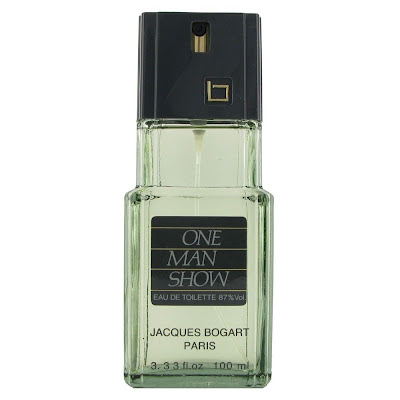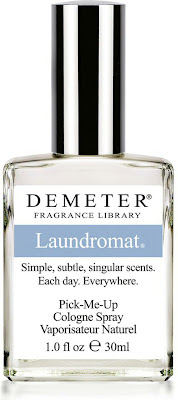Your favorite fragrances are being reformulated. What do you do? Panic. Dial 911. Throw all your expendables out the fire escape and take only cash, canned food, and pictures of your loved ones. Get down on your knees and pray.
Kidding, kidding. Nah, don't do any of those things.
Occasionally I get concerned comments about reformulations, which fragrance to trust, which variation in packaging to look out for, etc. A few months ago, I wrote a
post about reformulations, specifically two of my favorites, Grey Flannel, and Kouros. I lamented that these masterpieces had been messed with, although despite my certainty that something had changed, I was hard-pressed to identify what it was. With Grey Flannel, it seemed like there was less oakmoss, less violet, more anise. With Kouros, there seemed to be a thinner citrus and civet intro, followed by a slightly muted drydown of clove and incense, sans honey and wildflowers. I wasn't a happy customer.
Then I did side-by-side sniff comparisons of my older bottles against the new. In the case of Grey Flannel, it was apparent to me that there was only a very, very subtle difference. The violet leaf had been toned up, and the actual violet ionone toned down. This resulted in a more peppery, anise-like top for the new version, which contrasted just a little with the smoother, mossier top of old.
In the case of Kouros, lengthy wearings helped me discern what happened. Recently I wore my older formula for a full day, in relatively high heat. Its bright citrus/musk top notes carried predictably into the heart, where a nice melange of honeyed wildflowers (and lots of lavender) opened up, creating a beautiful sweetness. The incense base was solid, upholding the perfume for an appreciable time. The new version of Kouros, however, is toned back on all fronts, and in fact the concentration has been altered slightly - it is now two steps closer to being an eau de cologne, instead of a standard EDT. There is more water, as noted in the ingredients list, instead of perfumer's alcohol.
Still, the new Kouros performs the same. There's a lighter citrus/musk opening, a lighter wildflower accord, a lighter incense in the base. The same beautiful sweetness chimes in every now and then to remind me that I'm wearing a masterpiece.
We all know that reformulations happen, and that sometimes this changes the quality of a fragrance for the worse. On basenotes, and on Fragrantica, we read all the time that it's not worth wearing Paco Rabanne Pour Homme unless you can find a bottle from the late '80s or early '90s, before the latest round of cost-cuts trimmed the life out of it. Quorum gets accused of being a pale sliver of its former self, due to reckless changes in how oakmoss gets dosed. I've even read that 4711, which is a fairly simple EdC consisting primarily of citrus aromachemicals, was gutted some time back, and now masquerades as itself. If true, it's all a damn shame.
Let's get something straight here. Sometimes fragrances do get ruined. I haven't said anything about it, because I didn't want to shit on the venerable house of Azzaro, which I like and admire greatly. But their most recent reformulation of Azzaro Pour Homme - which follows my
review of it - is a shambles. They have taken the idea of "modernization" too far, and made what was once a terrific French fougère into a ghastly watery thing that smells like someone dropped an Azzaro Pour Homme tablet in an eight-gallon jug of New England tap. This is an example of a reformulation failure, and if you really must know, I can't recommend buying the recent crop of ApH until they change it back. They had already turned it into a sports fragrance, which I didn't mind and actually liked, but then they took it a step too far, and now you'd be better off wearing Stetson by Coty. And no one is better off wearing Stetson by Coty. No one.
But in the interest of "Getting Things Straight," let me add that Azzaro Pour Homme is a rare case. Grey Flannel was reformulated. Several times. It still smells like Grey Flannel. Nothing has changed to the extent that it smells like some shadow of itself. Kouros has been under the knife a few times also, and it still smells like Kouros. Quorum - which I have had batch variation issues with in the past - still smells like Quorum, and although I'd appreciate it if they improved its grapefruit note, I'm totally comfortable saying that nothing has changed. These fragrances have stood their ground, and are worth re-purchasing. And so have other fragrances, and they're worth re-purchasing, too.
My friend
Shamu1, whose excellent blog I have been reading for a while now, recently made an
excellent point about reformulations. It's something that shouldn't be overlooked, because it is very true: when fragrances age in the bottle, various solvent ingredients evaporate through whatever tiny cracks and fissures exist in their bottles. Stuff like alcohol and water. It happens very slowly, very gradually, and sometimes almost imperceptibly. The result is that the perfume oils, the raw materials that make the fragrance tick, become a little more concentrated, and seem to intensify.
That 10 year-old bottle of Paco Rabanne Pour Homme probably smells a little better than the one you bought a month ago. That's because your older Paco is holding a bit less water, and a bit of a congealed formula. Its essence is more concentrated by a mere fraction, enough for your nose to detect. It smells better, because there's less "filler" between your nose and the stuff that makes Paco the amazing masculine perfume that it is. Meanwhile, your new bottle has all that filler still in it, still buffering the air, holding the perfume at bay. It's present, but it's polite. Maybe even a little hollow, compared to the old stuff. That's normal. That's nothing to get crazy over.
I know that my new bottle of Kouros has been reformulated because I see that they've re-allocated the position of water in the ingredients list. But almost every other ingredient is the same. And the only difference is that there's more alcohol in my older bottle. My older bottle may be about 8 or 9 years old. Could be a little older. It smells a little stronger, denser. There's not as much buffer between the fragrance and my nose, so I'm getting the full brunt of synthetic civet and bergamot when I first spray it on.
Should I be peeved that they put more water in the new version? Yes and no. It makes it a little harder to smell Kouros right now. But water evaporates. Ten years from now, I may have my old Kouros back. So what's the point of getting all upset over it? There is none.
Basenotes and Fragrantica are full to the brim with threads regarding reformulation. Packaging changes. Batch numbers. You name it, it's there. It's a fool's game. Don't listen to the guy who tries to send you on a mission to find Kouros from 1983. When your bid wins on Ebay, you'll likely receive a perfume that smells old. The citrus notes will have soured, and the civet - some of which may have been real back then - will be off-balance. The floral notes will have peeled and become powdery before their time. The incense base, which is supposed to smell raw, will instead seem burnt. And what can you tell people on the internet then? That you shouldn't have paid $100 for an old bottle of Kouros, because the original formula hasn't survived the decades? That it would have been easier and cheaper to just go to the mall and grab a bottle of the new stuff? That despite all your attempts to pass the skunked juice off as "beautiful," and "one-of-a-kind," none of your friends are buying it?
Or will you go back on basenotes, or Fragrantica, and tell the new kids on the block that it's not worth buying Kouros unless they find its original formula? That won't make you feel better about all the original formulas you bought, wore, and regretted.
Life is full of change. Acceptance of change is part of life. Don't get hung up on the past. Move forward always.

































